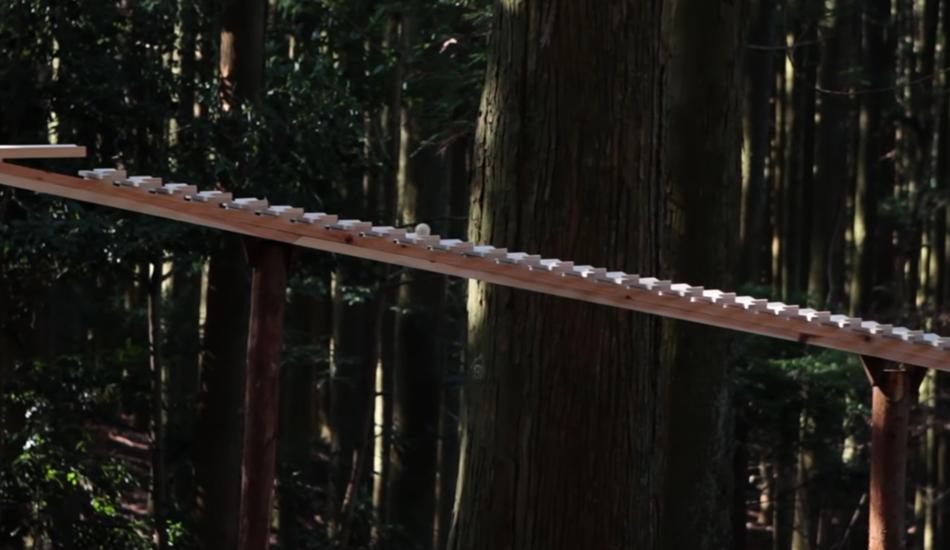Back in 2011, Japanese telecom company Docomo wanted a creative advert to introduce their new Touch Wood phones. They contracted creative director Morihiro Harano who decided to showcase a Bach music composition played through a long, custom-made xylophone by using one of the four fundamental forces of nature — gravity.
The musical ad
The ad depicts a wooden xylophone stretched out through the forest on a downward slope. A wooden ball is released at the top that drops and passes through every single key in the path of its motion, effectively recreating Bach’s Cantata 147 in the process. Many people often find it shocking that no digital effects were used to create the music.
Harano had initially gone through a much more complex design for the instrument. He removed many gimmicks and finally decided on an instrument that simply went along a straight line into the forest. He zeroed in on Bach’s composition since the music has the same length of notes as the xylophone. Led by Wood Engineer Mitsuo Tsuda, a team of expert carpenters worked on the xylophone, ensuring that every cut and slope was exactly as required.

If the installation went wrong, the musical composition would sound entirely different than intended. Fortunately for Harano, there wasn’t any such problem since Tsuda’s team ended up creating a xylophone that was even more accurate than the blueprints. The ad went on to win the Golden Lion at Cannes. You can watch it here.
Xylophone facts
Though the sound of a xylophone might sound similar to that of a piano, it is actually classified as a percussion instrument. It typically is made up of 36 to 48 wooden bars that cover three to four octaves. Each bar is an idiophone that is tuned to the pitch of a musical scale, meaning that they produce various sounds through vibrations.
“It is played using two mallets that are made of wood, plastic, or metal and give the instrument its characteristic, percussive sound. Playing a xylophone is different than playing a piano because the instrument is larger and the musician has a lot more area to cover during a song,” according to Hockessin Community News. For softer sounds, musicians often use mallets made of medium to hard rubber. The instrument’s tone is enhanced by the tube resonators that are located at the bottom portions of the bars.

The xylophone is believed to have first been created in Southeast Asia, from where it traveled to other places. Though the xylophone is presently laid out in a piano-like appearance, this layout was only established in the last century. Prior to that, xylophone bars were laid out in four rows in regions like Eastern Europe. Most xylophones today are made of hardwood. In ancient times, they were made out of bamboo or maple. The richness of the sound created by the instrument depends on the type of wood used to create it.
The xylophone is often confused with another instrument — the marimba. Since the xylophone emits a sharper note, some musicians play the two instruments together for richer sounds. In Latin America, it is normal to interchange the two instruments. In Senegal, xylophones are part of local tradition and have often been used during initiation ceremonies as well as to scare monkeys and other creatures from gardens.
Follow us on Twitter, Facebook, or Pinterest










